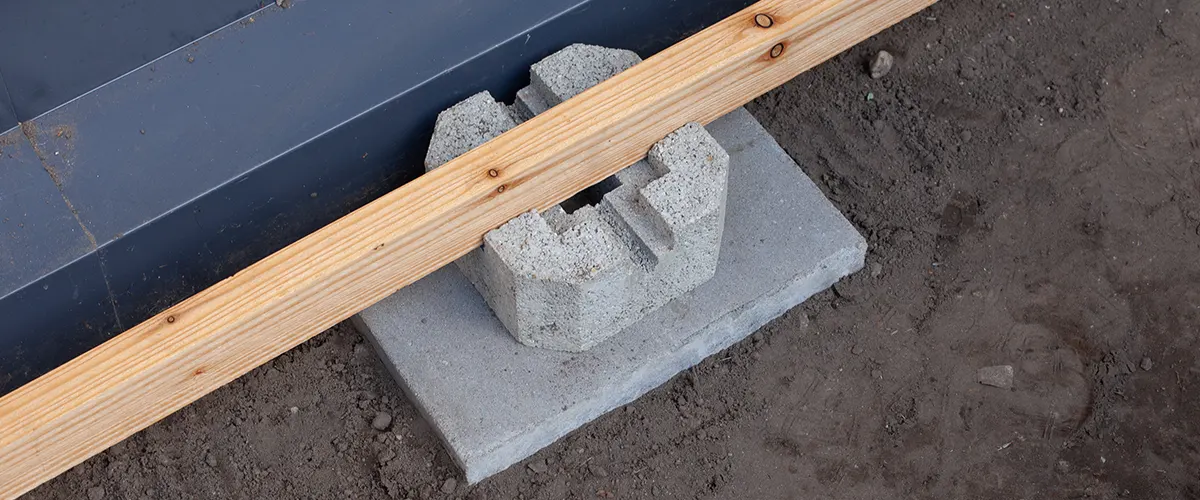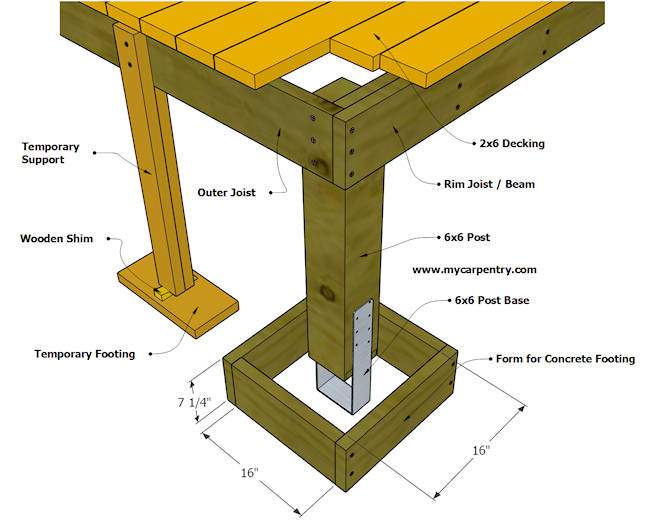Engineered for Success: The Scientific Research Behind Robust and Resilient Deck Footings
Wiki Article
Make The Most Of the Life Expectancy of Your Deck With Strong and dependable Grounds
As property owners, we invest a considerable amount of time and resources into producing the perfect outside area. A deck is frequently the focal point of that room, giving an area to unwind, amuse, and appreciate the elegance of nature. Nonetheless, in order to fully make best use of the life expectancy of your deck, it is essential to guarantee that it is developed on trusted and strong grounds. These footings create the structure of your deck, offering stability and assistance, and are often the distinction between a deck that lasts for years and one that requires continuous repair services. In this conversation, we will certainly discover the importance of trusted grounds, the different kinds of solid footing products, correct setup methods, and just how to keep and evaluate your deck's grounds to stop damages. So, whether you remain in the procedure of looking or developing a new deck to enhance the durability of your existing one, join us as we uncover the tricks to a deck that stands the examination of time.Relevance of Dependable Footings
The significance of trustworthy grounds can not be overstated when it concerns making best use of the lifespan of your deck. The footings function as the structure whereupon the whole structure rests, supplying security and assistance. Without a strong ground, the deck is susceptible to shifting, sinking, and even collapse, which can substantially minimize its life-span and posture safety and security threats.

Choosing the ideal kind of footing is also critical. The most typical types consist of concrete footings, helical piers, and sonotubes. Elements such as dirt problems, climate, and the size of the deck will certainly figure out the most ideal choice. Employing an expert to analyze the dirt, layout the grounds, and make sure proper installation is extremely advised.
Buying reputable footings may include additional cost and effort upfront, yet it is a worthwhile investment that will certainly add to the lasting durability and safety of your deck. By ensuring a strong structure, you can appreciate your deck for years to find, understanding that it is developed to endure the test of time.
Sorts Of Solid Ground Products
To make sure the stability and durability of your deck, it is vital to consider the different types of strong ground products readily available. The option of footing material is vital as it supplies the essential assistance and stability to withstand the weight and lots of the deck structure.One common and dependable material used for deck grounds is concrete. Concrete footings are durable and give exceptional stability. They can be poured directly right into the ground or utilize precast concrete footings for easier installment. Another alternative is helical piers, which are steel shafts with helical plates that are screwed into the ground. These piers supply exceptional load-bearing capacity and can be made use of in various dirt conditions.
For locations with bad dirt problems, such as loosened or extensive dirts, a footing system that makes use of steel or composite piers may be preferred. Deck Footings. These piers are driven deep into the ground to reach secure dirt layers, making certain the stability of the deck
Sometimes, deck grounds can likewise be constructed utilizing treated lumber. Nonetheless, it is necessary to make sure that the lumber is appropriately treated to stand up to rot and degeneration triggered by direct exposure to dampness and insects.
When picking a ground product for your deck, it is important to think about variables such as soil conditions, climate, and regional building ordinance. Consulting with an expert specialist or architectural designer can aid identify the most suitable footing material for your particular deck job.
Appropriate Installment Strategies for Grounds
Taking into consideration the relevance of ensuring stability and resilience for your deck, it is necessary to recognize the correct setup methods for grounds. The success of your deck job depends heavily on the stability of its foundation, which is why complying with the appropriate installation techniques is important.Most importantly, it is essential to determine the appropriate size and depth of the footings based on the style and tons demands of your deck. This details can be obtained from developing codes or with assessment with an architectural engineer. As a general regulation, grounds must go to the very least 12 inches in diameter and prolong listed below the frost line to prevent shifting or working out.
As soon as the dimensions are established, the next step is excavation. Digging the openings for the grounds must be made with precision, making sure they are deep adequate and have a degree bottom. Deck Footings. This More Help will give a stable base for the grounds
To additionally enhance the security of the footings, it is advised to utilize a concrete mix with a stamina of a minimum of 3,000 psi. This will certainly guarantee the grounds can stand up to the weight and forces applied by the deck.
During setup, it is very important to maintain the footings degree and aligned effectively. This can be achieved by utilizing a level and string lines to lead the placement of each footing.
Keeping and Examining Your Deck's Grounds
Regular maintenance and extensive examinations are vital for ensuring the long-lasting security and safety of your deck's footings. With time, footings can give in to damage, climate condition, and dirt activity, which can compromise their structural honesty. To maximize the lifespan of your deck's grounds, it is vital to apply a regular upkeep routine and perform complete inspections.
Furthermore, it is vital to check footings for any indications of damage or degeneration. This includes checking for cracks, divides, or crumbling concrete, as well as any signs of movement or settlement. Any problems must be addressed quickly to protect against further damage and make sure the security of the deck.
In addition, it is advised to inspect the surrounding soil for any kind of indicators of disintegration or moving. Dirt movement can affect the security of the footings, so it is important to deal with any type of soil-related issues promptly.
Indicators of Footing Damage and Just How to Address Them
Footing damage can present serious dangers to the security and security of your deck, making it necessary to promptly identify and attend to any indications of damage. One of the most usual indicators of footing damages is sinking or resolving of the deck. This can happen due to dirt erosion, insufficient footings, or bad construction techniques. It is critical to take instant action to stop more damages if you discover that your deck is uneven or leaning. An additional indicator of footing damage is collapsing or cracking of the concrete footings. This can be brought on by freeze-thaw cycles, too much moisture, or poor top quality concrete. It is crucial to have them inspected and repaired by a specialist if you observe any fractures or degeneration in the grounds. In addition, if you notice any kind of movement or moving of the deck, such as a deck that feels unpredictable when walked on or wobbles when weight is applied, it might be an indication of footing damage. In such instances, it is recommended to seek advice from a professional contractor or an architectural engineer to assess the level of the damages and determine the suitable strategy. Remember, attending to footing damage immediately read this article can assist ensure the lasting stability and safety and security of your deck.Conclusion
In conclusion, guaranteeing the integrity and stamina of footings is essential for making the most of the life-span of your deck. By making use of strong ground products and correctly mounting them, you can protect against damage and keep the security of your deck. Regular maintenance and examinations will certainly additionally aid determine any kind of indications of footing damages and enable prompt fixings. Inevitably, taking these measures will assist maintain the integrity and long life of your deck.These grounds form the foundation of your deck, giving stability and assistance, and are often the difference between a deck that lasts for decades and one that calls for consistent repair services. In this conversation, we will certainly explore the value of trustworthy footings, the different types of strong ground materials, appropriate setup strategies, and exactly how to maintain and inspect your deck's footings to protect against damages.Routine upkeep and detailed examinations are vital for ensuring the lasting security and security of your deck's footings. Remember, addressing ground damage quickly can help make certain the long-term security and safety and security of your deck.
By making use of strong footing materials and effectively installing them, you weblink can protect against damage and keep the security of your deck.
Report this wiki page